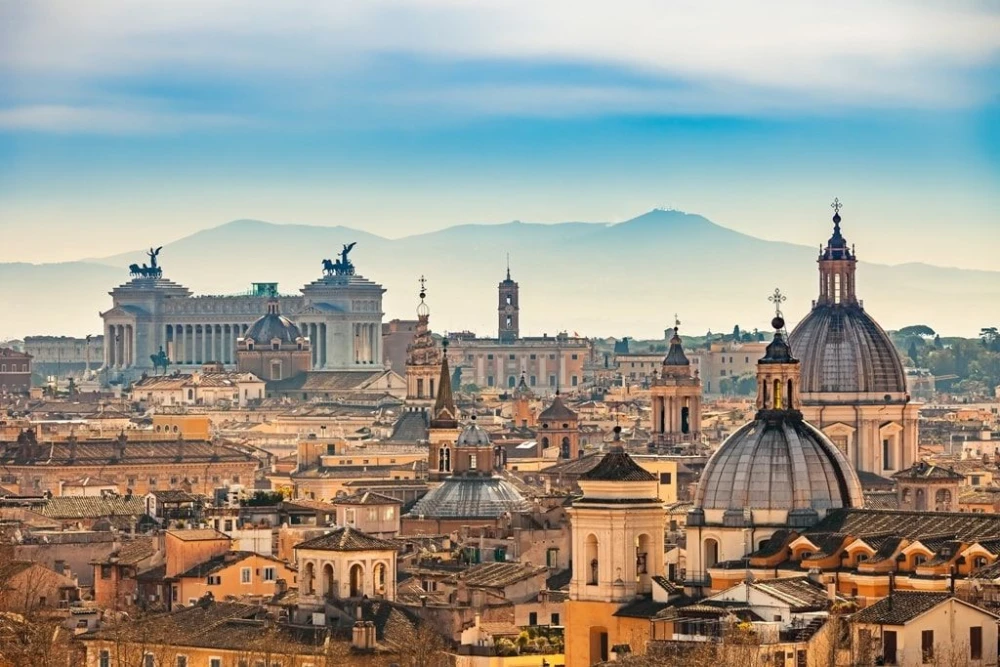15124, Maroysi, Athens, Greece
Civitavecchia (Rome), Genoa, Marseille (Provence), Valencia, Ibiza, Cagliari


Our gateway to the Eternal City, Civitavecchia has served as Rome's seaport since the 13th century, boasting a long and venerable history. Its location near the modern city, made it a perfect vacation resort for emperor Trajan, who built a pleasure villa. while Bernini and Michelangelo designed the harbor fortifications. Yet the Eternal City, the ancient capital of the Western World and the center of Christianity for nearly 2.000 years, is our main reason to be here. YYou can visit the ruins of the Forum and the Colosseum, throw a coin in Fontana di Trevi to make sure you return to Rome one day, take a photo in front of the Vatican, view the splendors of the Sistine Chapel or climb the Spanish Steps, once the heart of Rome's Bohemian Quarter and enjoy a delicious gelato, in the glamorous area.

Today we are visiting Genoa, the capital of the Province of Genoa and of the region of Liguria, a powerful commercial center seaport and city-state. It was the birthplace of the great adventurer Christopher Columbus and its maritime roots have fostered a dialect that has absorbed elements of Neapolitan, Calabrese and Portuguese over the centuries. Genoa's harbor is a bustling swarm of activity, hosting a museum and an aquarium and has a magnificent medieval flair, ideal for a nice stroll. This port is our launching point for the sprawling metropolis of Milan.

Marseille is the largest port on the Mediterranean, France's second largest city and a virtual melting pot of peoples and cultures. It is a unique city with a feel and culture all its own. It is also a place of striking contrasts, from the fishing boats of the picturesque Vieux Port to the modern Canebiere. Dominating the harbor is the infamous Chateau d'If, the rocky prison from which Alexandre Dumas' "Count of Monte Cristo" escaped. If you have time, explore the countryside around Arles and Avignon, immortalized in the canvases of Van Gogh, Cezanne, Matisse and Picasso, try the renowned bouillabaisse or tour the lovely towns and vineyards of Provence.
Since its founding as a Roman colony in 138 B.C., the Visigoths, the Moors, the Catalan and Aragonese and the modern tomato-throwers have thrived on the shores of the Mediterranean at the Gulf of Valencia. Valencia is a mix of the old and the new. The historic past is depicted in the stone geometry of the Valencia Cathedral, the mediaeval gates of the Serrano and Quart towers, or the Tribunal de las Aguas (Water Court) and one of the most iconic examples of Gothic architecture in Europe, the Lonja de la Seda, declared an Intangible Cultural Heritage site by UNESCO. The new facet is embodied in the arching white steel of the futuristic City of Arts and Sciences, designed by Valencian architect Santiago Calatrava.
One of Spain's Balearic Islands, Ibiza lies about 50 miles off the coast of Spain. Over the course of its history, it has been claimed by the Phoenicians, Romans, Vandals, Byzantines, Moors, Greeks and Carthagenians. Today's cruise visitors come for the vibrant nightlife at the ever so famous night clubs, for the sunny beaches, the clear waters and a little historical flavor. The fortified upper section of Ibiza Town depicts Renaissance architecture and has earned it recognition as a UNESCO World Heritage Site.
Cagliari, the capital of Sardinia, spreads on a hillside overlooking the aptly named Gulf of Angels. Visit the old Castello Quarter, with the narrow and shaded streets and the old buildings, or enjoy the wide and expansive beaches of Sardinia, basking in the Mediterranean sun. All over the island, there are traces of ancient settlements, such as neolithic ruins at Nora; Phoenician, Cathaginian and Roman relics near Cagliari; and Arab, Genoese and Iberian heritage evident in architecture dating back to the Middle Ages.

Our gateway to the Eternal City, Civitavecchia has served as Rome's seaport since the 13th century, boasting a long and venerable history. Its location near the modern city, made it a perfect vacation resort for emperor Trajan, who built a pleasure villa. while Bernini and Michelangelo designed the harbor fortifications. Yet the Eternal City, the ancient capital of the Western World and the center of Christianity for nearly 2.000 years, is our main reason to be here. YYou can visit the ruins of the Forum and the Colosseum, throw a coin in Fontana di Trevi to make sure you return to Rome one day, take a photo in front of the Vatican, view the splendors of the Sistine Chapel or climb the Spanish Steps, once the heart of Rome's Bohemian Quarter and enjoy a delicious gelato, in the glamorous area.
Itinerary







